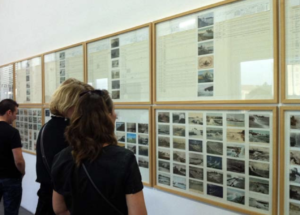- How does artistic autoethnography differ from anthropological autoethnography? Are there any significant differences, or are artists simply taking the autoethnographic approach of anthropology and applying it to their practice?
In the book Anthropology and Art Practice, it is mentioned about artistic auto-ethnography and anthropological auto-ethnography. In fact, both anthropologists and contemporary artists must be connected practically and theoretically with some fragmentary aspects of experience in a globalized world. . Art ethnography needs not only the ethnographic description of the art world in the traditional sense, that is, the observation of social facts in the art world, but also the artistry of the art world, which traditional ethnography seldom observes, such as the emotions and emotions of art participants. , vision, discernment, judgment, taste, preference, understanding, etc. to conduct a comprehensive study. But if it is too one-sided to say that the artist just adopts the autoethnographic method of anthropology and applies it to their practice, indeed, as seen in the video works of artist Kutlug Ataman, a deep ethnographic process is involved in his works, and The work itself, in its multi-screen incarnation, is a fundamentally ethnographic installation form, this fusion of art and documentary; a work that straddles the boundaries of contemporary art and anthropology, can propose a positive case for anthropological representation Future, that is concerned with combining narratives in complex ways.
- Anthropological autoethnography continues to develop anthropological attention to the formation of personality, and how this differs between and within cultures. Is the study of art also a study of personality formation? If so, what assumptions does art research make about the personality of an “artist”?
If “art” is just a mode of perception, then “artistic research” must also be a mode of process. During the research process, artists search, archive, collect, interpret and illustrate, model, experiment, intervene, etc., as well as gather inspiration, reflect, discuss, formulate research questions, conceive and compose, implement, publish, Evaluate….
With regard to the book “Anthropology and the Gift“, Sansi conducts in-depth research mainly from two aspects: first, the material culture, cosmology and human outlook of the African Shang-Brazilians who believe in the Domblay religion; on the other hand, the Atlantic coast History of fetishism and witchcraft among predominantly Portuguese-speaking peoples. After Moss’ “The Gift”, the “gift” with extraordinary vitality is still inextricably linked with common sense. Sansi extended this connection to contemporary political practice, not only showing the continuity of methods between contemporary art and anthropology, but also making immeasurable contributions to emerging fields such as knowledge production, theory and political continuity.
 Dedicated to the Unknown Artists, 1972–6 ➡️Susan Hiller
Dedicated to the Unknown Artists, 1972–6 ➡️Susan Hiller
-
Keywords
1.ethnography :(This term is first contact, not very familiar, but very interesting)
Refers to a descriptive research project or research process on a specific human society. Contemporary ethnography tends to be society-centric rather than individual-centered, focusing on descriptions of the current environment rather than emphasizing historical events. The focus of ethnography is to record the way people live, and the core of ethnographic research method is participant observation. It is especially suitable for studying social groups and individuals and the process of interpersonal communication. Many ethnographers live in the areas they survey for a year or more, learning the local language and engaging as much as possible in the daily lives of the local people.
2.Methodology- methodological
Methodology, a theoretical system or system aimed at solving problems, people’s fundamental view on “what and how the world is” is the world outlook. Using this point of view as a guide to understand and transform the world becomes a methodology. In my opinion, methodology is the general way people understand and transform the world, and it is the way and method people use to observe things and deal with problems. In a nutshell, the world outlook mainly solves the problem of “what” the world is, and the methodology mainly solves the problem of “how to do it”. “Fang” is the principle of the world, and “Fa” is a specific method based on the principle of the world. The combination of the two is the method, which can help us achieve our goals. Only a method based on the principles of the world can truly change the world!
3.Sensory Turn
There are plenty of precedents in the practice of modernism and postmodernism: for example, in the early 20th century, artists began to pay attention to the synaesthesia in the experience of art. The transformation of digital media technology and the creation of new media art have shown a clear shift in aesthetic experience, emphasizing the interaction between the perception subject and “sensual consciousness”.
In the new media art works, the contextualized sensory experience of touch and hearing can also be transformed into visual and audible artistic expression content by using digital media. Expand the situational construction of art from image experience to space experience. No longer just by ears, or eyes, or touch, or taste, or smell. The multi-channel effect of aesthetic information source is realized.

